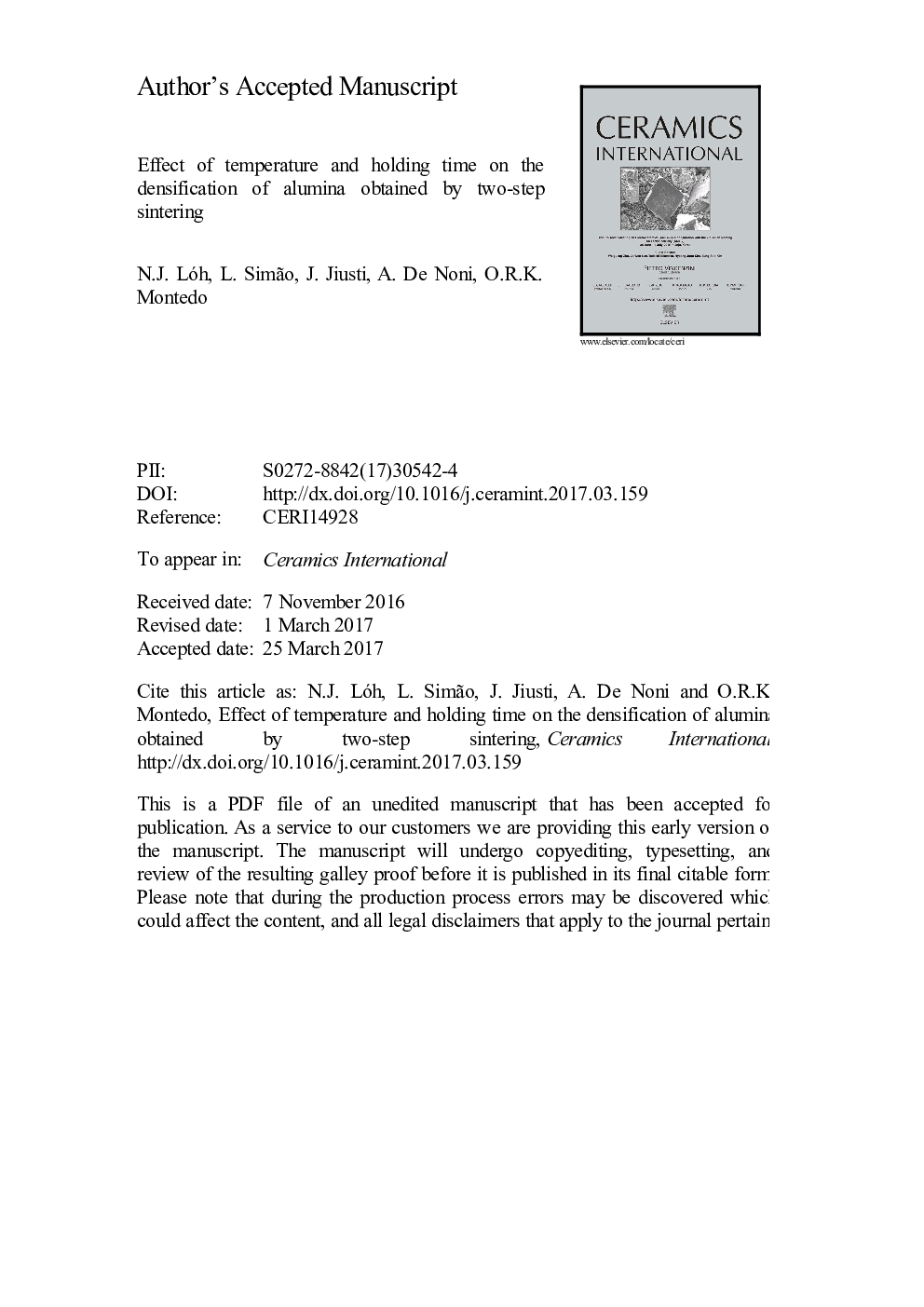| Article ID | Journal | Published Year | Pages | File Type |
|---|---|---|---|---|
| 5437749 | Ceramics International | 2017 | 26 Pages |
Abstract
The two-step sintering technique is a process of controlling the sintering curve, which provides materials with higher density and smaller grain size when compared to conventional sintering. This technique was evaluated by optical dilatometry with three commercial alumina powders of different purity (92, 96 and 99 wt% of Al2O3) and particle size (between 0.73 and 2.16 µm). Different sintering conditions in the first (temperature, T1) and second (temperature, T2, and holding time, t2) steps were studied in order to evaluate the effect of these variables on densification and grain growth. Considering T1 as the temperature at which a relative density (Drel) of 83% was achieved, and for the range of conditions tested, it was found that higher Drel values and lower grain size of alumina were obtained with higher T2 and lower t2. Alumina with 99 wt% purity sintered at T1 of 1550 °C for 5 min and T2 of 1500 °C for 4 h showed the best relationship between higher densification (~96% relative density) and reduced grain size (0.94±0.15 µm). Thus, this work demonstrated that suppression of grain growth can also be obtained for commercial alumina.
Related Topics
Physical Sciences and Engineering
Materials Science
Ceramics and Composites
Authors
N.J. Lóh, L. Simão, J. Jiusti, A. De Noni Jr., O.R.K. Montedo,
